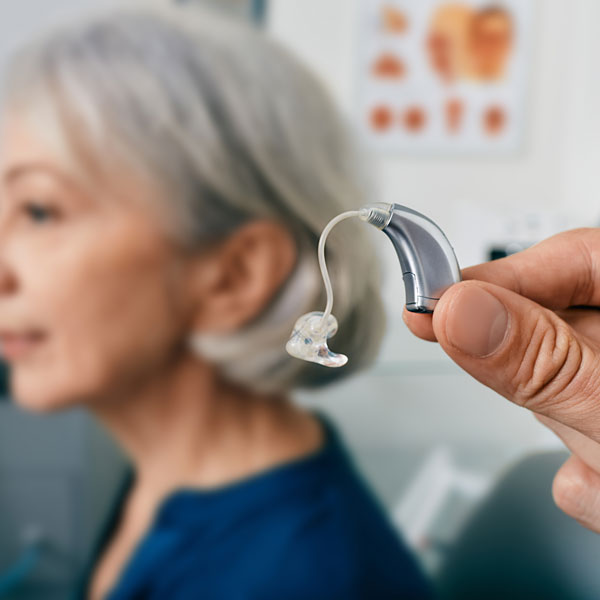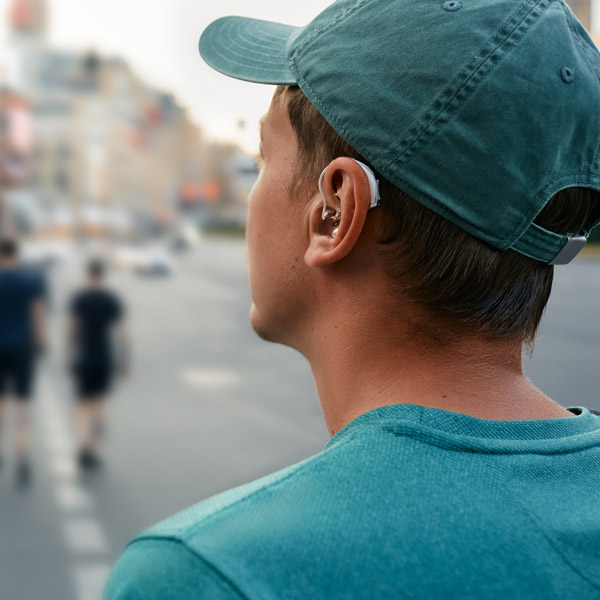Hearing Aids
Hearing Aid Interest Form
"*" indicates required fields
What Is the Hearing Aid Process Like?
Our audiology team will partner with you and guide you so you fully understand how your hearing aids work and how to use them. Some of the topics they'll advise you on may include the following:
- How your aid will help you alleviate your hearing loss
- How to connect your hearing aid to your smartphone
- How to adjust and fine-tune your hearing aid settings
- How to maximize your device’s capabilities and potential
Contact Us

What Does an Audiologist Do?
A medical audiologist specializes in evaluating, identifying, preventing, and treating hearing loss and balance disorders. They educate patients and their families on how to best cope with hearing loss and strategies for alleviating its symptoms and improving communication. Austin Ear Nose & Throat Clinic’s audiologist and team have years of education, training, and certifications to provide exceptional care and solutions for your hearing condition.
Your Hearing Aid Options
Here are the hearing aid devices we have available to you:
Basic or Entry-Level Hearing Aids
Our basic or entry-level models may be right for you if you have mild to moderate hearing loss. Many are offered over the counter, providing a quality audio experience at affordable prices. You can do the following with basic hearing aids:
- Hear and listen to daily sounds and noise easily
- Feel comfortable engaging in casual conversation
- Hear sounds from the television more clearly
- Hear better in public, social, or shared spaces
- Engage with most outdoor activities
Premium Medical-Grade Hearing Aids
For patients with severe hearing loss or those who often occupy dynamic or changing environments, our premium medical-grade hearing aids are suitable. They feature integrated technology and outstanding sound quality and are more discreet than other models. Here are some of the advantages they offer:
- Hear others' words and have conversations clearly and comfortably
- Cut down on wind noise so you can enjoy outdoor activities more
- Custom sound experiences to meet your specific needs
- Cutting-edge streaming and rechargeable solutions
Receiver in the Canal (RIC) Hearing Aids
The Receiver in the Canal (RIC) hearing aids are discreet, positioned comfortably behind the ear, and nearly out of sight. Their open design allows for more natural sound quality. Most patients prefer RIC because they:
- Accommodate a wide range of hearing loss needs
- Connect to smartphones, Bluetooth, and other electronics
- Charge quickly for near constant and reliable use
Are You a New or Experienced Hearing Aid User?
The hearing aid we recommend may depend on how much experience you've had with them. Here's what we'll consider:
New Users
If you're new to hearing aid use, you undoubtedly have questions, concerns, and challenges. Our team will guide you through our quality selection of devices and assess your condition to help you make the right choice.
Experienced Users
Are you an experienced hearing aid user who wants a new device or upgrade? We will evaluate your current hearing condition and recommend new products to suit and fulfill your ever-changing needs.

Other Solutions for Correcting Hearing Loss
If a hearing aid won’t suffice, we have other options available for you, including the following:
- Cochlear Implants: These implants are surgically placed into the ear and connected to an earpiece. They're helpful for patients with severe or significant hearing loss.
- Surgical Procedures: We provide safe, effective, and quick ear bone surgeries for patients who’ve suffered hearing loss from structural issues and injuries.
Enjoy the Latest Hearing Aid Technology
Thanks to technological advancements, modern hearing aids can adjust and adapt to your surroundings' audio volume and integrate with other devices. If you're suffering from a new or existing hearing condition, the team at Austin Ear Nose & Throat Clinic is here to guide you through our options and help you select the right one for your needs. We will empower you to choose a hearing aid that elevates your lifestyle and satisfaction.

Selling Premium Hearing Aids in Austin, TX
From listening to your loved one's voices, music, and your surroundings, your hearing is crucial to keeping you safe and enjoying your life. If you've sustained audio impairment due to age, injury, or a medical condition, the team at Austin Ear Nose & Throat Clinic is here to help. We source and sell entry-level and premium hearing aids for Austin, TX patients. Whether your condition is new or you’ve dealt with it for years, we will work with you to choose an aid that helps you hear more clearly and comfortably.
Your Path to Relief Starts Here
512-381-2850
